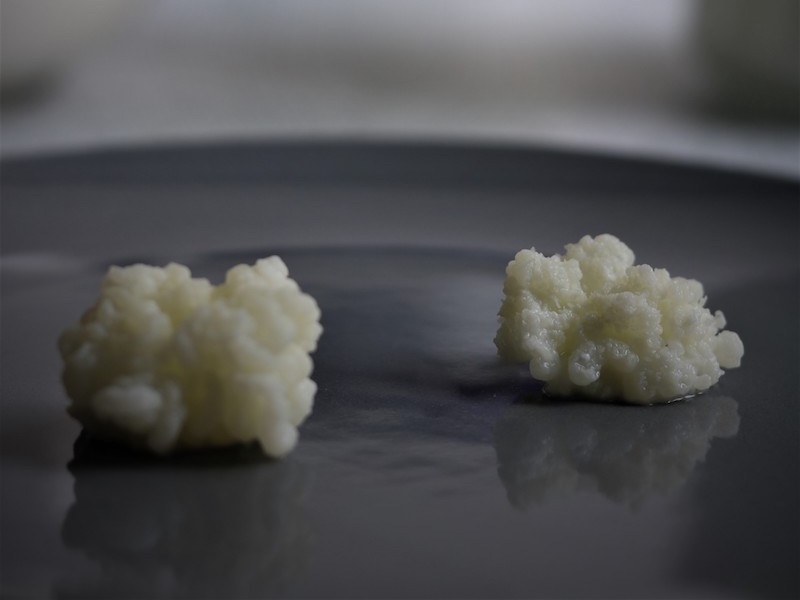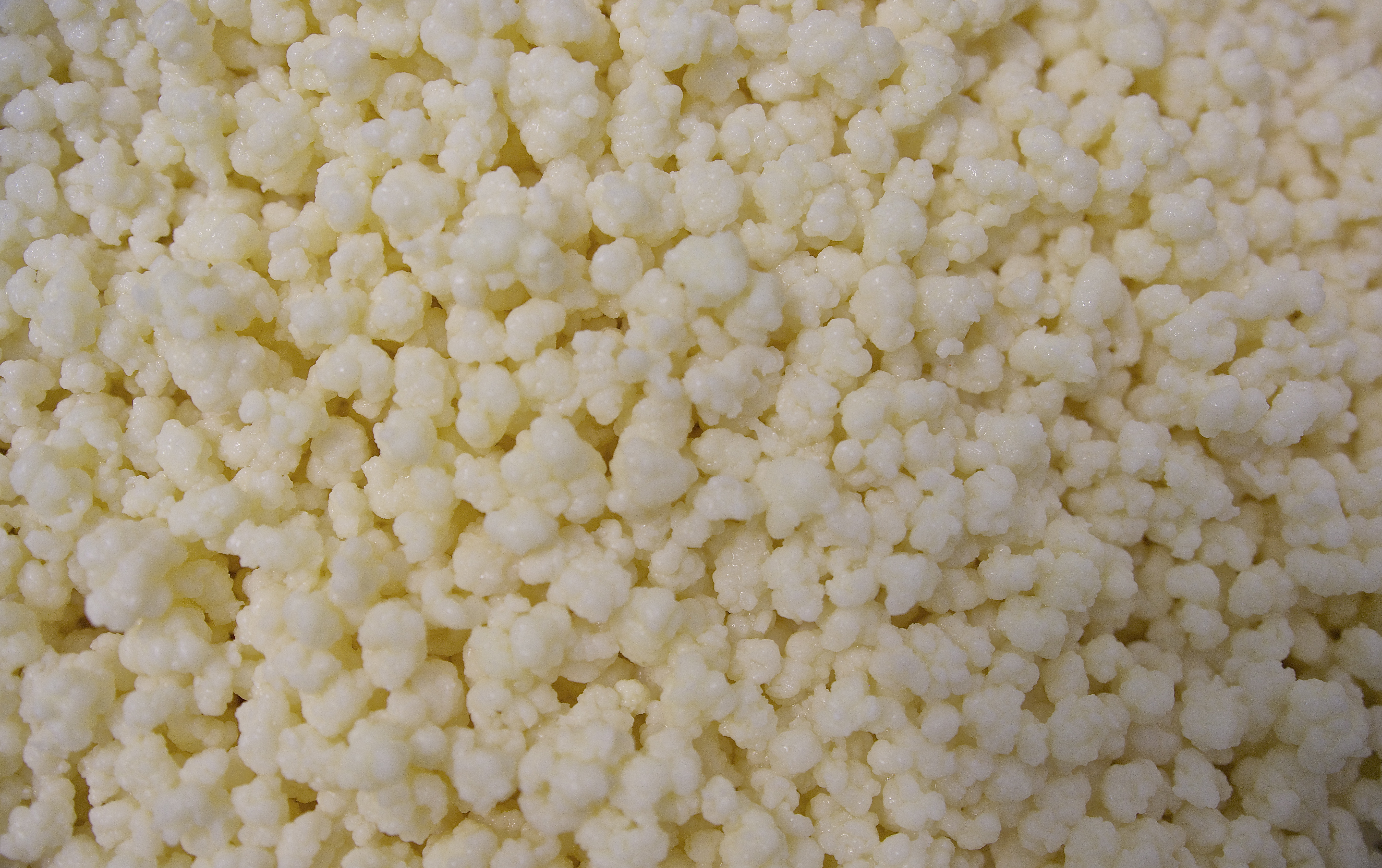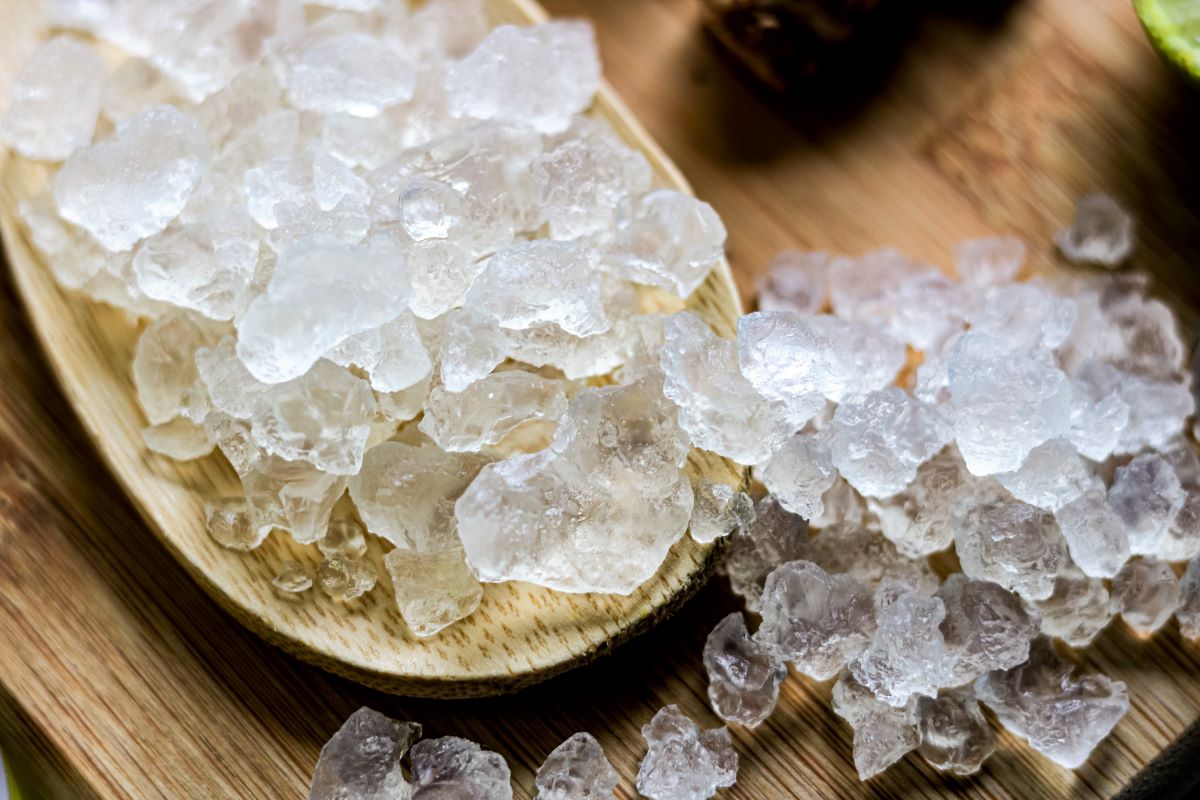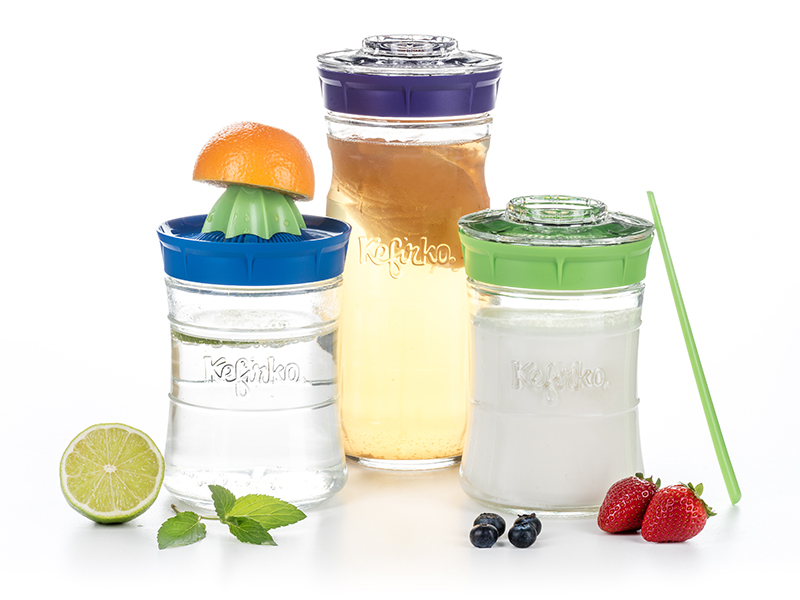5 nasvetov za rast kefirnih zrn

Iščete načine za boljšo rast kefirnih zrn?
Če niste zadovoljni z rastjo in razmnoževanjem kefirnih zrn, smo tukaj zbrali nasvete, kako to lahko spremenite. Čeprav je najpomembneje, da sta okus in vonj kefirja zadovoljiva, je to včasih povezano tudi z njihovo rastjo.
Berite naprej in izvedeli boste, kako stimulirati rast kefirnih zrn.
1. namig: Prilagodite temperaturo.
Včasih zrna ne rastejo, ker je temperatura v prostoru prenizka. Nižje temperature upočasnjujejo fermentacijo in rast zrn. Najbolje je, da zrna pustite na optimalni temperaturi in je ne spreminjate ves čas, ker lahko zaradi nenehnih sprememb zrna prenehajo rasti.
Mogoče ste opazili, da kefir hitreje fermentira v toplejši sezoni, to vpliva tudi na rast zrn. V tem primeru je fermentacija hitrejša, zato pazite na prekomerno fermentacijo, ki prav tako ni dobra, če se ponavlja prepogosto.
Optimalna temperatura za kefirna zrna je 22 – 25 °C.
2. namig: Pazite, da imajo zrna dovolj hrane.
Kefirna zrna potrebujejo hrano za fermentacijo. Pomembno je tudi razmerje med zrni in mlekom/vodo. V mlečnem kefirju je hrana laktoza. Za pripravo vodnega kefirja pa morate dodati sladkor, ki služi kot hrani za zrna.

Razmerje zrna : voda/mleko je pomembno
Če za mlečni kefir uporabite preveč mleka, bodo zrnca potrebovala več časa za fermentacijo. V tem primeru se mleko lahko pokvari, še preden ga zrna fermentirajo.
Pri uporabi preveč zrn za količino mleka morda zrna mlečnega kefirja ne bodo imela dovolj hrane in bodo stradala. V tem primeru se začne prekomerna fermentacija, ki lahko, če se pogosto ponavlja, poškoduje zrna.
Pomanjkanje hrane je mogoče popraviti z dodajanjem mleka v prahu kefirju, ki vsebuje veliko laktoze – sladkorja v mleku, ki deluje kot hrana za zrna.
Kefirju lahko dodate minerale: mineralne kapljice, sladkor rapadura, rozine, fige itd. Ali pa poskusite dodati nekaj mleka v prahu, da povečate količino laktoze v mleku.
Vodni kefir pripravite s svežo, neklorirano in nefiltrirano vodo. Klor v vodi lahko uniči seve bakterij v zrnih, filtrirana voda pa nima mineralov, s katerimi se hranijo kefirjeva zrna. Idealno je, če za spodbujanje rasti zrn uporabite naravno izvirsko vodo, polno mineralov.
Razmerje vodnega kefirja
Priporočeno razmerje je 1 žlica sladkorja: 1 žlica kefirnih zrn: 1 skodelica vode
Razmerje mlečnega kefirja:
Priporočeno razmerje je 1 del zrn: 10 delov mleka.
3. namig: Ločite večja zrna
Manjša zrna rastejo hitreje, ker imajo večjo površino v stiku s hrano. Če imate zelo velika zrna, jih razdelite na manjša. Pri tem bodite nežni, da jih ne poškodujete.

4. namig: Ne delajte odmorov od fermentacije
Kefirjeva zrna se najbolje obnesejo, kadar so ves čas aktivna. Neprekinjenost je ključnega pomena, če želite pripraviti okusen domač kefir. V redu je, če si občasno vzamete odmor od kefirja, samo poskrbite, da teh odmorov ne bo preveč in da ne bodo prepogosti. Ta odmor je običajno zelo stresen za zrna. Da bi upočasnili njihovo delovanje, jih običajno postavimo na hladno. Da bi bila zrna bolj zdrava, se temu izogibajte. Morda jih bo težko spet aktivirati.
5. namig: Pretresite in premešajte

Kefirne kulture so na voljo tukaj:








I’m going to try adding a little non-fat dry milk to my kefir; its carbohydrate count is 100% sugar (lactose).
We recommend using full fat fresh organic milk to enable enough food for grains to grow.
” but avoid over-pasteurized milks.”
In my humble research, I found ALL commercial organic milks to be “Ultra Pasteurized”
which I found it be defined as higher temps at longer duration
Can anyone respond to this enigma ?
Hi there! Thanks for opening this debate.
Have you tried with fresh milk? You can buy it in stores too. Some of them are “heated” only to a certain lower temperature for a short time, they are still considered fresh milks and are stored in the fridge.
I’ve found the same. That’s all my grains have ever known and they’re healthy and multiply enough for me to share 1 Tb every other month
I have found a couple organic milks that are not UHT Pasturised. It is $8 a gallon and hard to find, but that gives me the best results. Having worked a few summers on an organic dairy farm, I would rather pay a little extra for the better quality. After all; we are what our food eats.
How about freezing kefir grains? There are times when we have enough kefir for our purposes, and don’t want to keep making more …
Thanks!
I also would like to know the answer to your question. I am the only consumer of milk kefir in my home and often have more than I can use in a day or two. Keep my grains in the fridge.
Kind regards
How can I get enough grains, to make Cheese with them, please?
Hi, today I bought kefir grains online but it is not visible and i asked about this to the Seller. He says to do 7 fermentation’s so that grains will grow. My question is will it grow within 7 fermentation’s or he is lying.
Hi there,
I can’t find you in our database, did you buy through our website?
We sell live reusable cultures, that’s small granules. I’m not sure what you mean by that they are not visible?
It takes a bit to activate kefir grains after receiving them. It can take a week or so, but even from the start you should have the grains to begin with.
I have just bought my first milk kefir grains 5g and added 250ml organic full cream milk. My question is after the first 24 hrs when I strain the kefir do I just continue to add 250ml more milk every day to the grains, how much milk should I add when the grains multiply?
Hi Amanda,
you can use less than 250ml when activating the grains. You need to change the grains until the smell, consistency and taste of kefir is ok. You can wash the grains with lukewarm water first few days.
When they are activated, you can use more milk (600ml). After the grains multiply, you can add more milk or take away some grains. It depends on the taste of kefir you want to have and the consistency. You can have lots more grains for that amount of milk.
All the best! Kefirko team
How much Milk should I use, if I have about half to 1 teaspoon of grains, please?
I make 2 cups with 1 tsp.
The consistency now looks like thickish curdled milk, have tried putting out overnight as it is hot in Brisbane at the moment during the day. When strained it just looks lumpy not like little cauliflowers.
Smells ok, have tried adding more milk and less milk just seems to be thickish consistency.
1) How do I know, when the Smell and Consistency is right to use?
2) Can I use the Liquid, for anything other than, just to drink?
3) How much should I drink of Kafir, per day?
Thank you.
I have had this batch of kefir grains for about 8 months. About 2 months ago, I took a long break from them ( 1 week in the fridge). The kefir has not tasted or smell like it did since then. The tartness is overpowering. I still drink it, but wondered if it’s safe. The grains are also not growing much at all. I use full fat milk and change them every 24 hours. I also only use plastic to clean them. Any suggestions? Should I just get new ones? How would I know they are dead or permanently damaged?
Hi there,
thank you for your question. The changes like these can affect the grains in some way. Usually takes some time, even months in some cases to get them to the way they were. It’s important to stay consistent and feed the grains regularly. Note, if you don’t trust the kefir is OK to consume, if the smell and taste are way off, it’s better to discard the batch and get new cultures.
All the best from Kefirko team
Hi I bought some coconut kefir grains from your site about a month ago but the grains don’t seem to be growing. In fact they seem to be shrinking in size. I use organic coconut cream and a little organic almond milk. I change after about four days. I have put a table spoon of organic raw sugar in with them because I thought I might be starving them.. I’ve had mill kefir grains before and couldn’t stop them growing. Any tips on how to get the coconut milk legit growing would be great.
Thank you in advance
Hi Mark!
Thanks for contacting us. We do not sell coconut kefir grains, only regular milk kefir grains. Check the packaging for the ones you bought to see who was the producer of your item. All the best, Kefirko team
I have found a couple organic milks that are not UHT Pasturised. It is $8 a gallon and hard to find, but that gives me the best results. Having worked a few summers on an organic dairy farm, I would rather pay a little extra for the better quality. After all; we are what our food eats.